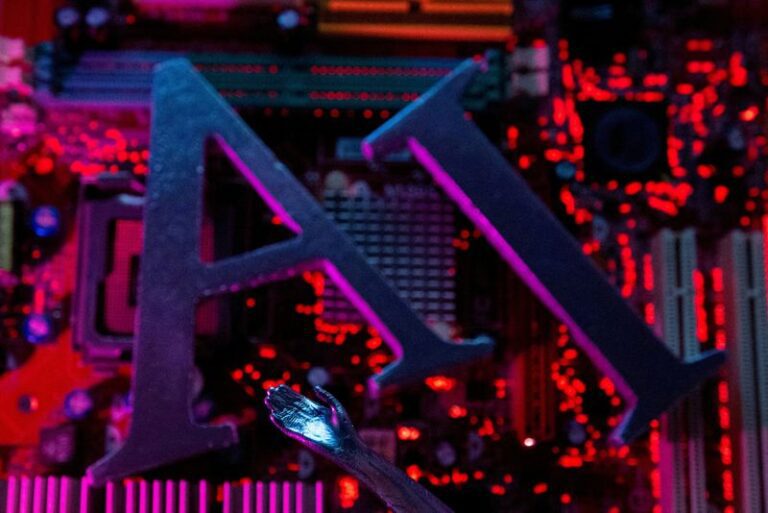By Supantha Mukherjee and Anna Tong
STOCKHOLM/SAN FRANCISCO (Reuters) – In the early years, getting AI models like ChatGPT or rival Cohere to spit out human-like responses required large teams of low-cost workers to help the models distinguish between basic facts, for example whether an image was of an object. a car or a carrot.
But more sophisticated updates to AI models in a fiercely competitive field now require a rapidly expanding network of human trainers with specialized knowledge — from historians to scientists, some with Ph.D.s.
“A year ago, we could hire undergraduates to simply teach AI how to improve,” Ivan Zhang, co-founder of Cohere, said of its in-house human trainers.
“Now we have licensed doctors who teach models how to behave in medical environments, or financial analysts or accountants.”
For more education, Cohere, which was last valued at more than $5 billion, is working with a startup called Invisible Tech. Cohere is one of OpenAI’s main competitors and specializes in AI for businesses.
The Invisible Tech startup employs thousands of trainers working remotely and has become a leading partner of AI companies ranging from AI21 to Microsoft to train their AI models to reduce errors, known worldwide AI under the name of hallucinations.
“We have 5,000 people in over 100 countries around the world who are PhDs, masters and knowledge work specialists,” said Invisible founder Francis Pedraza.
Invisible pays up to $40 per hour, depending on the worker’s location and the complexity of the job. Some companies like Outlier pay up to $50 an hour, while another company called Labelbox said it pays up to $200 an hour for “high expertise” topics like quantum physics , but started with $15 for basic subjects.
Invisible was founded in 2015 as a workflow automation company for companies like food delivery company DoorDash to digitize their delivery menu. But things changed when a relatively unknown research company called OpenAI contacted them in spring 2022, before ChatGPT’s public launch.
“OpenAI presented us with a problem, which was that when you asked a question to an early version of ChatGPT, you were going to hallucinate. You couldn’t trust the answer,” Pedraza told Reuters.
“They needed an advanced AI training partner to provide reinforcement learning with human feedback.”
OpenAI did not respond to request for comment.
Generative AI produces new content based on the previous data used to train it. However, sometimes it cannot distinguish between true and false information and generates false outputs called hallucinations. In one notable example, in 2023, a Google chatbot shared inaccurate information about the satellite that first took photos of a planet outside Earth’s solar system in a promotional video.
AI companies are aware that hallucinations can derail GenAI’s appeal to businesses and are trying to reduce them through various means, including using human trainers to teach the concept of reality and fiction.
Since joining OpenAI, Invisible says it has become the AI training partner of most GenAI companies, including Cohere, AI21 and Microsoft. Cohere and AI21 have confirmed that they are customers. Microsoft has not confirmed that this is a customer of Invisible.
“These are all companies that had training problems, where their number one cost was computing power, and the number two cost was quality training,” Pedraza said.
HOW DOES IT WORK?
OpenAI, which sparked the GenAI frenzy, has a team of researchers aptly named the Human Data Team that works with AI trainers to collect specialized data to train its models like ChatGPT.
OpenAI researchers offer various experiments such as reducing hallucinations or improving writing style and work with AI trainers from Invisible and other vendors, said a source familiar with the OpenAI’s processes. business.
At any given time, dozens of experiments are underway, some with tools developed by OpenAI and others with vendor tools, the person said.
Based on what AI companies want – whether it’s getting better at Swedish history or doing financial modeling – Invisible hires workers with the appropriate degrees for these projects, thereby reducing the burden of AI companies managing hundreds of trainers.
“OpenAI has some of the most incredible computer scientists in the world, but they’re not necessarily experts in Swedish history, chemistry, biology or anything you can ask it,” Pedraza said, adding that more than 1 000 contract workers take care of OpenAI. alone.
Cohere’s Zhang said he personally used Invisible’s trainers to find a way to teach his GenAI model to find relevant information from a large data set.
COMPETITION
Among competitors in this space is Scale AI, a private startup valued at $14 billion that provides AI companies with training datasets. It has also ventured into the field of providing AI trainers and counts OpenAI among its clients. Scale AI did not respond to interview requests for this story.
Invisible, profitable since 2021, has only raised $8 million in primary capital,
“We are 70% team-owned and only 30% investor-owned,” Pedraza said. “We facilitate secondary rounds, and the most recent negotiated price was valued at half a billion dollars.” Reuters could not confirm this valuation.
Human trainers first got into AI training through data labeling work that required fewer qualifications and was also paid less, sometimes as low as $2, mostly done by people living in countries Africans and Asians.
As AI companies release more advanced models, demand for trainers specializing in dozens of languages is growing, creating a high-paying niche where workers from a variety of fields could become AI trainers without even knowing how to code.
Demand from AI companies is leading to the creation of more companies offering similar services.
“My inbox is basically flooded with new companies popping up here and there. I see this as a new space where companies are hiring humans just to create data for AI labs like ours,” Zhang said .
(Reporting by Supantha Mukherjee in Stockholm and Anna Tong in San Francisco; editing by Kenneth Li and Claudia Parsons)

